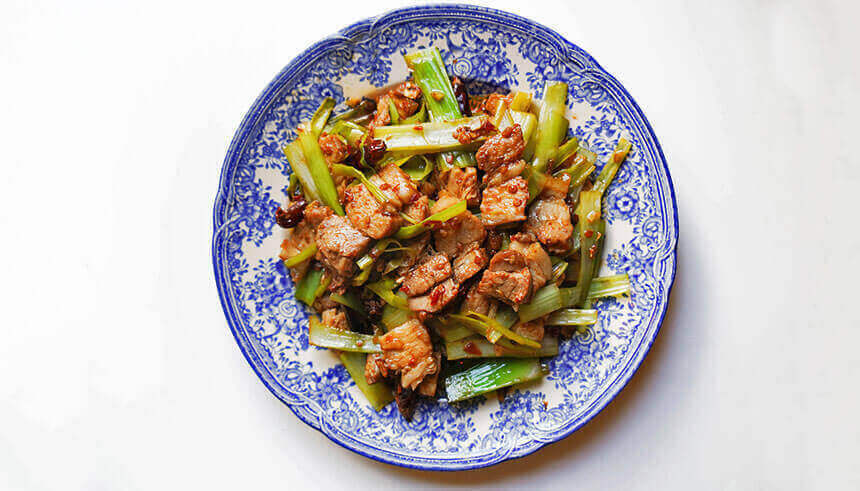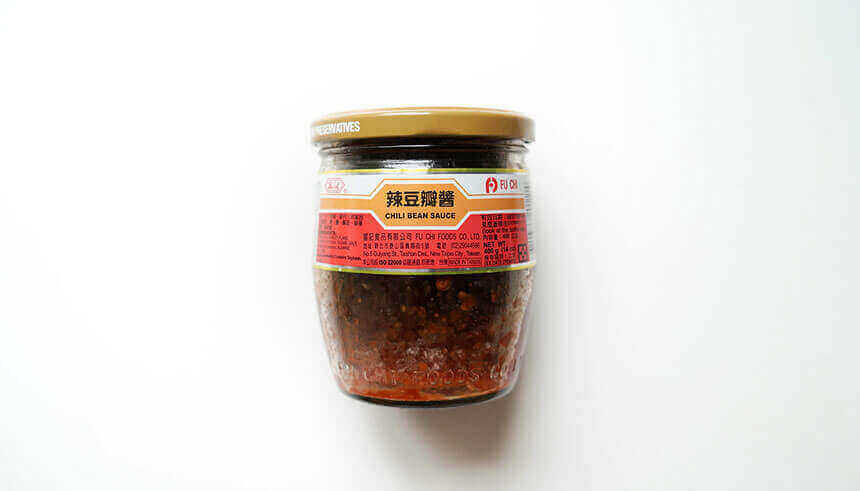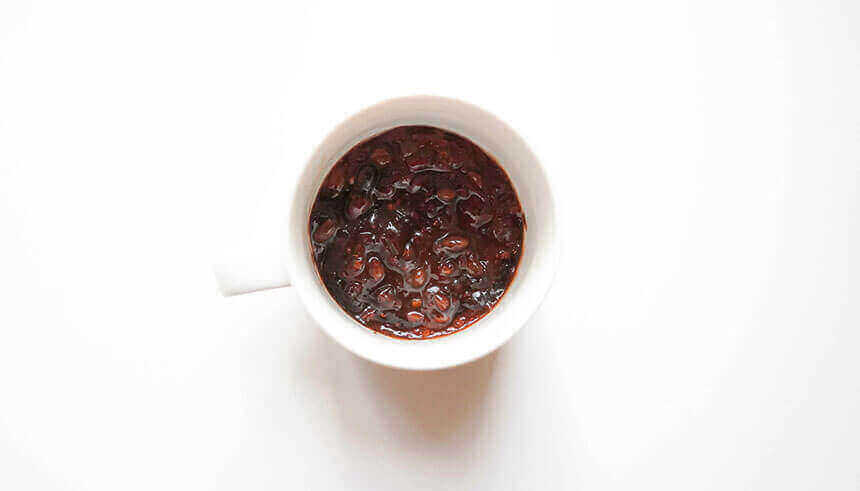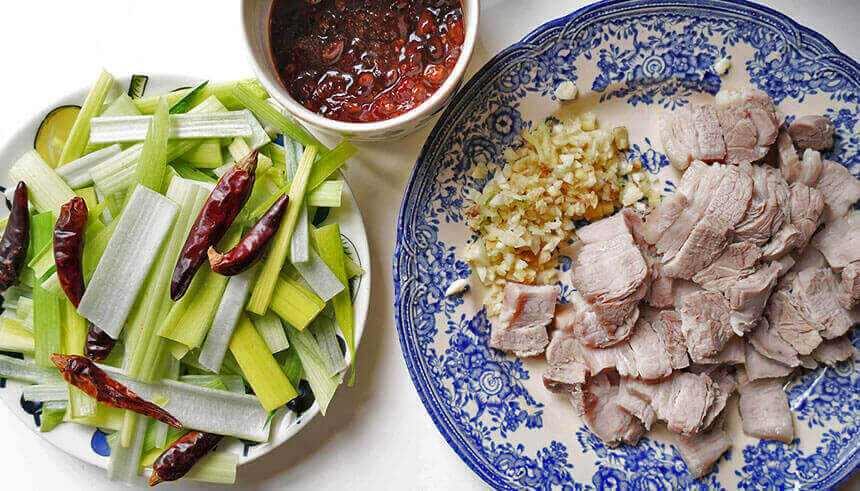SEPTEMBER 17, 2020 | Reach Further
For more articles and related content, visit East West Bank’s digital business publication, Reach Further.

Twice-cooked pork, a traditional Sichuan dish made with doubanjiang, a fermented chili bean paste
Food writer Clarissa is back with authentic Chinese recipes made with popular Asian food products.
I’m a bit late to the game, but I only started embracing the full potential of fermented chili bean paste last year. When I lived in Hong Kong as a full-time reporter, I didn’t have a lot of time to make meals, but I also didn’t want to cut that many corners. I love bold and spicy flavors, so this condiment—known as doubanjiang in Chinese—quickly became my go-to. I’d mix it with light soy sauce and some sugar, dress it over a century egg, cut that up and eat it with rice porridge. Or for dinner, I’d whip up a quick mapo tofu dish with just a dollop of doubanjiang and some chili oil.
What it is:
Doubanjiang is a magical spicy sauce from the Chinese province of Sichuan, composed of fermented fava beans and a local variety of chili known as er jing tiao. Unlike tableside hot sauces like Sriracha or Tabasco, this chili sauce is aged in earthen jars for months, which gives it unique, deep layers of flavor.

Doubanjiang, a chili sauce from Sichuan
How it’s made:
First, fava beans are soaked and then inoculated with a fungal culture that renders them soft, sweet and sour. After, they’re combined with a spice mix and pulverized salted chili peppers—a combination that is then left to ferment, age and break down. The final sauce might feel a bit one-dimensional at first; it’s very salty, almost overpoweringly so. But the key is cooking it in hot oil so that the subtleties can break through. I find that the spicy chili flavor comes in slowly, and there’s a soft and mild layer of sweetness that drifts in afterwards. In Sichuan, a lot of doubanjiang is homemade and aged in earthen vessels in the backyard. It’s essentially generations of knowledge distilled in a jar— a sauce that tastes completely different depending on who’s making it and where. Some people will add a splash of wine, and everyone has their own proprietary spice blend.

One of the main ingredients of doubanjiang is fava beans
It’s said that the best doubanjiang brands come from Pixian, a district in Sichuan. While locals will swear it’s the water that makes the sauce from there stand out, the truth is that Pixan’s dominance in the industry is a combination of sharp marketing and centuries of experience. The town of Pixian has been making doubanjiang for over 300 years, and some sauces are aged for up to three years. Naturally and by association, doubanjiang is the foundation behind a lot of Sichuan dishes. Mapo tofu owes its color and pungency to it, and it can be used in nearly any stir-fry—with eggplant, fish, beef, or fried rice. The key is trusting that the dish will mellow out with a combination of aromatics, a dash of sugar and some cooking wine.
In the West, doubanjiang brands are very limited. The ones from Pixian are boldly advertised as being from Pixian but aren’t always readily accessible at the grocery stores. While there are copious lists out there debating the merits of different brands, if I had to stick to just one, it’d be Juan Cheng—an old brand from Pixian with roots to the 17th century. I’ve found that Cantonese and Taiwanese-made brands tend to err on the sweeter side, and strangely, these are the ones that are most commonly found in the Western world. I’m currently spending the summer in Sweden, and the Taiwanese brand Fu Chi is the only thing I could get a hold of. It’s not all that spicy, but the taste is there and that’s good enough for me.
To showcase the depth of this sauce, I’ve developed a simple and condensed recipe for twice-cooked pork. This is a traditional Sichuan dish, where pork belly is first boiled and then flash-fried with aromatics and sauce.

Twice-cooked pork, a traditional Sichuan dish
Twice-cooked Pork
Cooking time: 40 minutes
Serves: 2
Ingredients:
- 1 pound (450 grams) whole pork belly
- 1 slice of ginger, about ¼ inch thick
- 1 teaspoon Sichuan red peppercorns
- 2 scallions
- Water (enough to cover ingredients in the pot for blanching)
- 2 tablespoons vegetable oil
- 4 garlic cloves, minced
- 4 dried chili peppers
- 1.5 cup (140 grams) leeks, cut into 2-inch segments
For the sauce:
- 2 tablespoons doubanjiang
- ½ tablespoon black bean sauce
- 1 teaspoon sugar
- 2 teaspoons Shaoxing wine
Directions:
1. In a medium pot, add in the pork belly, ginger, Sichuan peppercorns and scallions. Cover with water and bring to a boil. Turn the heat to low and simmer for 30 minutes.
2. Meanwhile, make the sauce. Combine the doubanjiang with black bean sauce, sugar and Shaoxing wine. Mix thoroughly. Set aside for later.
3. Take the pork out of the pot, and discard the liquid and the spices. Run the pork under cold water. Then on a cutting board, cut the pork belly into thin, ⅛-inch slices. You can cut off the skin here if you want, but that’s completely optional.
4. In a large wok over high heat, warm up the vegetable oil. Add in the minced garlic and dried chili peppers—cook until aromatic. Add the sauce, and cook until dark and bubbly, about 30 seconds. Turn the heat to medium, and then add in the pork and leeks. Combine until the sauce is evenly coated and the leeks have wilted.
5. Serve and enjoy with a bowl of white rice.

